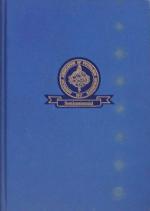|
This section contains 1,305 words (approx. 5 pages at 300 words per page) |

|
Exploration for hydrocarbons (oil, gas, and condensate) is commonly acknowledged to have begun with the discovery at Oil Creek, Pennsylvania, by "Colonel" Edwin Drake in 1859. However, this was only the start of the modern global era of technology-driven advances in exploration. Traditionally, oil exploration was conducted by recognizing seeps of hydrocarbons at the surface. The Chinese, for example, used oil (mostly bitumen) obtained from seeps in medication, waterproofing, and warfare several thousand years ago. They frequently dug shallow pits or horizontal tunnels at seep locations but also, as early as 200 B.C., drilled down as much as 3,500 ft (1,067 m) using rudimentary bamboo poles (making Drake's 69.5 ft [21.2 m] over 2,000 years later seem puny by comparison). In Baku, Azerbaijan, there are still gas and oil seeps that are permanently on fire and have been used to light caravanserai since the times of Marco Polo...
|
This section contains 1,305 words (approx. 5 pages at 300 words per page) |

|


